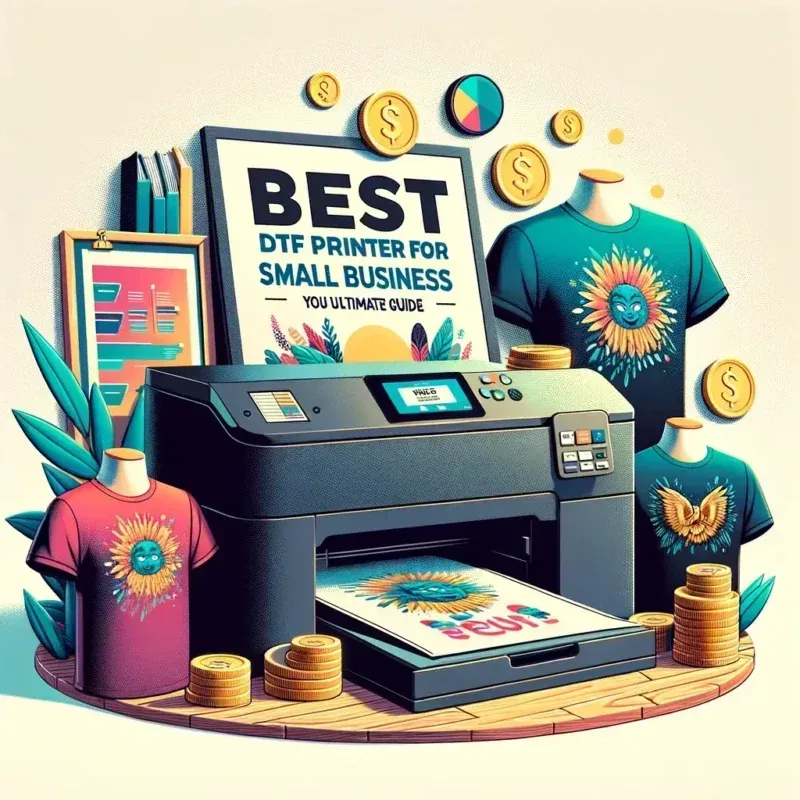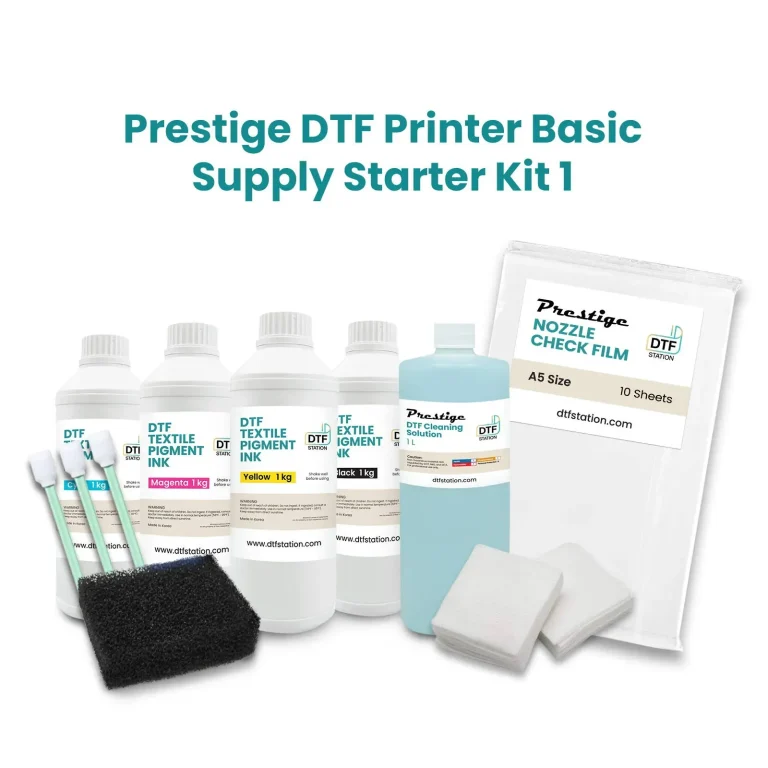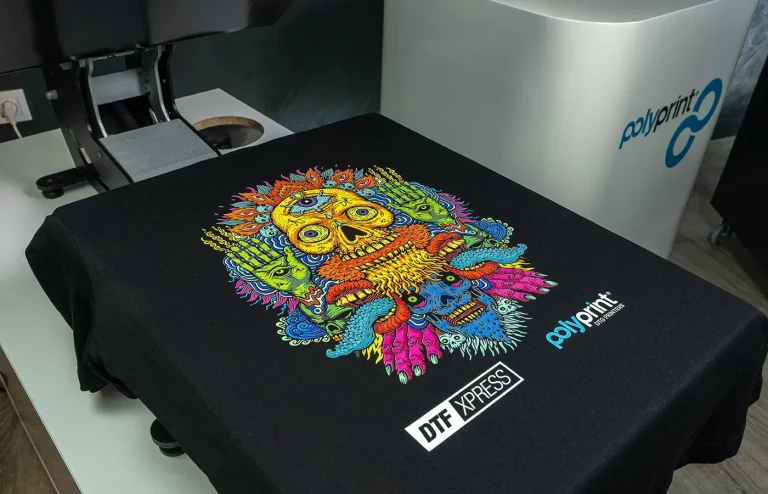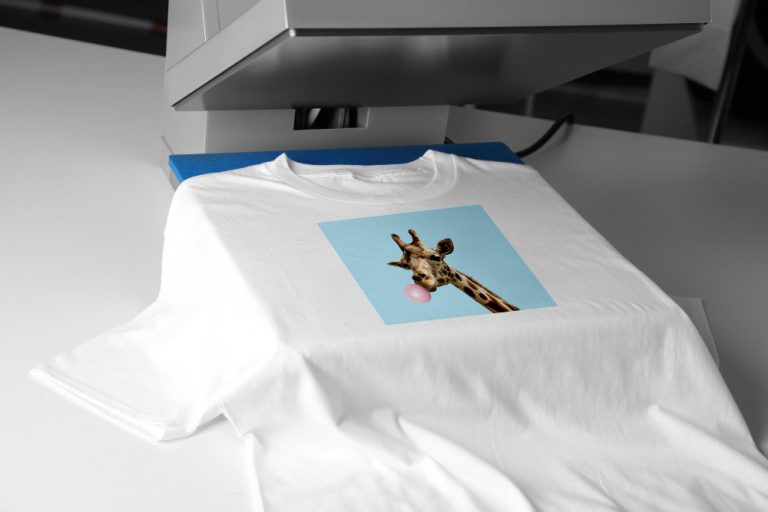DTF Printing Business: Your Step-by-Step Guide to Success
Starting a DTF printing business is an exciting opportunity for entrepreneurs looking to make their mark in the custom apparel industry. With its ability to produce high-quality, vibrant designs on various fabrics, Direct-to-Film (DTF) printing is rapidly gaining popularity among consumers and business owners alike. This innovative printing technique offers advantages such as lower startup costs and a more straightforward process compared to traditional methods. In this guide, discover how to start DTF printing, what equipment you’ll need, and how to create stunning DTF printing designs that will captivate your customers. Whether you’re just beginning your journey into the world of custom apparel printing or seeking to expand your existing business, knowledge of DTF printing can help you stand out in a competitive market.
Embarking on a venture in the custom textile printing realm can be both a transformative and lucrative endeavor. The concept of Direct-to-Film printing is reshaping how designs are transferred onto clothing and fabrics, paving the way for entrepreneurial creativity. Known for its ability to deliver intricate and colorful images, this printing method attracts those interested in starting a printing business with relatively minimal upfront investment. Exploring DTF printing techniques allows aspiring business owners to craft unique apparel that resonates with trend-savvy consumers. As you delve into this dynamic industry, understanding the essentials of custom garment printing can significantly enhance your chances of success.
The Basics of DTF Printing
Direct-to-Film (DTF) printing is defining a new era in custom apparel creation, allowing businesses to produce high-quality prints with remarkable efficiency. Unlike traditional screen printing, DTF technology utilizes a specially coated film that receives a design before being transferred to fabric via a heat press. What’s remarkable about DTF is its versatility—capable of printing on various materials, including cotton, polyester, and blends, it caters to a broad market, from fashion apparel to niche clothing brands.
Furthermore, the DTF printing process is not only efficient but also environmentally friendly. Using less water and producing less waste compared to older printing methods makes it an attractive option for eco-conscious businesses. As DTF continues to gain traction, understanding its operational mechanics and output quality is crucial for anyone looking to tap into custom apparel printing.
Essential DTF Printing Equipment
When embarking on your DTF printing journey, the choice of equipment plays a pivotal role in determining the quality and efficiency of your output. A reliable DTF printer, such as those from Epson or Mimaki, is essential as it directly impacts the vibrancy and detail of your prints. Investing in a high-quality printer will save you time and money in the long run, as lower-quality equipment can lead to wasted materials and subpar designs.
In addition to a DTF printer, you’ll also need a heat press machine, which is vital for transferring prints onto garments. Opting for a heat press with adjustable settings allows you to customize the process based on the material being used. Lastly, remember to gather all necessary supplies, including DTF films, inks, and adhesive powders, as these materials are fundamental to your printing operations.
Conducting Market Research for Your DTF Printing Business
Understanding your market is crucial when starting a DTF printing business. Conducting thorough market research helps identify your target audience, their preferences, and potential competitors in the custom apparel landscape. Leveraging online surveys, social media polls, or direct interviews can unveil valuable insights about what your customers seek, enabling you to tailor your offerings accordingly.
Moreover, analyzing your competitors gives you a clearer picture of pricing strategies, design trends, and promotional tactics that work. By finding a unique selling proposition—something that differentiates your DTF printing business from others—you can position yourself effectively in the market, attracting customers who are eager for distinctive custom apparel.
Creating Stunning DTF Printing Designs
The design phase is the heart of your DTF printing business, where creativity interacts with technology. Utilization of graphic design tools like Adobe Illustrator or free alternatives such as Canva can empower you to create captivating custom designs that resonate with your target audience. Knowledge of color theory, resolution, and print settings is crucial to optimize each design for the best possible output.
Additionally, consider keeping up with emerging design trends and consumer preferences within the custom apparel sector. Unique and trendy designs can set you apart from competitors, drawing attention to your brand. Collaborating with local artists or designers can also enhance the creativity of your offerings, offering customers designs they cannot find elsewhere.
Establishing Your DTF Printing Online Presence
A solid online presence is non-negotiable for today’s DTF printing businesses. A well-designed website acts as your virtual storefront, showcasing products, explaining services, and facilitating online purchases. Make sure to optimize your website using SEO best practices, including targeted keywords, high-quality images, and engaging content to attract potential customers searching for custom printing options.
Moreover, social media platforms like Instagram and Facebook are instrumental for marketing your DTF printing business. Use these channels to engage with your audience through promotional posts, behind-the-scenes content, and interactive stories. Regularly updating your social media feeds with new designs or customer feedback can help build a loyal following and increase brand visibility.
Effective Marketing Strategies for DTF Printing Services
Marketing your DTF printing business requires a blend of creativity and strategic planning. Effective online marketing strategies may include leveraging SEO for better search visibility, engaging in targeted social media advertising, and implementing email marketing campaigns to reach past customers. Building a network of local influencers can also help spread the word about your unique offerings.
In addition to online strategies, don’t overlook offline marketing. Participating in community craft shows and local markets can enhance your visibility and allow potential customers to experience your products firsthand. This direct interaction can also facilitate valuable feedback, refining your future marketing efforts and product offerings.
Frequently Asked Questions
How to start a DTF printing business from scratch?
Starting a DTF printing business involves several key steps. First, conduct market research to identify your target audience. Next, choose a business structure (like an LLC) and register your business. Invest in essential DTF printing equipment, including a reliable DTF printer and heat press machine. Finally, create unique designs using graphic design software and establish a strong online presence to showcase your products.
What equipment do I need for DTF printing?
To start your DTF printing business, you’ll need specific equipment. Essential items include a high-quality DTF printer (brands like Epson are popular), a heat press machine that allows for adjustable temperature and pressure, and additional materials like DTF film, specialized inks, and adhesive powders. Investing in good quality equipment is crucial for delivering vibrant and intricate designs.
What are the best practices for creating DTF printing designs?
When creating DTF printing designs, use graphic design software such as Adobe Illustrator or Canva. Ensure your designs are optimized by understanding color theory and DPI requirements. The right specifications improve print quality and appeal to customers. Experiment with unique ideas and trends to differentiate your custom apparel offerings in the market.
What are the legal requirements for starting a DTF printing business?
Before launching your DTF printing business, familiarize yourself with local legal requirements. This may include obtaining permits, licenses, and adhering to health and safety regulations. Consulting with a legal expert can provide clarity on your obligations and help ensure your business operates within the law.
How can I market my DTF printing business effectively?
Marketing your DTF printing business involves a mix of online and offline strategies. Optimizing your website for SEO can attract organic traffic, while social media platforms like Instagram can help showcase your designs. Participating in local craft fairs can increase visibility, and joining online marketplaces like Etsy can expand your reach to potential customers.
How do I manage finances for my DTF printing business?
To effectively manage finances in your DTF printing business, create a comprehensive business plan that includes projections for startup costs, pricing strategies, and a break-even analysis. Utilize accounting software like QuickBooks to track your finances, monitor expenses, and streamline budgeting. Proper financial management is essential for sustaining and growing your business.
| Step | Description |
|---|---|
| 1. Understanding DTF Printing | Learn about Direct-to-Film printing, its benefits including vibrant prints, eco-friendliness, and applications in custom apparel. |
| 2. Initial Considerations | Conduct market research, decide on business structure, and familiarize yourself with legal requirements for operating a printing business. |
| 3. Equipment Needed | Invest in essential equipment like DTF printers, heat press machines, and necessary materials such as DTF film and inks. |
| 4. Sourcing Materials | Build relationships with suppliers for quality DTF inks and films to maintain production flow. |
| 5. Creating Designs | Use graphic design software to create custom designs, understanding design principles for optimal quality. |
| 6. Establishing an Online Presence | Create a professional website and utilize social media for showcasing products and engaging with customers. |
| 7. Marketing and Sales Strategies | Implement both online (SEO, social media) and offline (craft shows, markets) marketing strategies to promote your business. |
| 8. Managing Finances | Develop a solid business plan addressing financial forecasts and utilize accounting software for efficient finance tracking. |
| 9. Customer Service | Focus on excellent customer communication and service to build a loyal customer base and improve reputation. |
Summary
Starting your own DTF printing business can be a lucrative venture if approached with careful planning and execution. This step-by-step guide highlights the essential aspects of this exciting industry, from understanding the DTF printing process to establishing a robust online presence and effective marketing strategies. Key points include the importance of quality equipment, sourcing reliable materials, and providing excellent customer service. As you navigate through the intricacies of operating a DTF printing business, remember that staying current with trends and prioritizing customer relationships will be vital for your business’s success. With perseverance and creativity, your DTF printing business can thrive in the competitive market.







